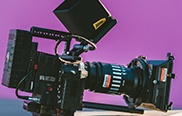You don’t need to be a professional artist to come up with a compelling narrative and turn that concept into a reality.
However, it’s easy to end up falling short of your goals if you don’t develop a detailed storyboard.
Even if you’re tempted to start moving forward right away, you should take the time to create a storyboard and workshop your ideas.
This is particularly true for those who don’t have professional experience in creative production.
Let’s take a look at some key storyboarding tips that every creator should be aware of
We can also help you find a strong storytelling narrator to get your audience more interested in the narrative.
1. Start with Story Beats
No matter what kind of project you’re working on, the storyboard should start from the most fundamental narrative elements.
Focus on the main characters, their central conflicts, and the key events that move them through the story.
The initial storyboard should reflect a logical progression in which each beat flows naturally from the one before.
Don’t worry too much about the specifics — remember that you’ll have a chance to shore up the details later on.
Storyboarding is the time to think of the big picture and how your content fits together as an organic whole.
2. Work with a Professional
If you’re new to creative work, it may be worth collaborating with someone who has the relevant skills and experience.
Even professional creatives often hire storyboard artists to help with this stage of the creative process.
Of course, the partner you work with will have a dramatic effect on your results.
Search carefully for someone who is invested in your project and seems like a good fit.
You should stay closely involved with your storyboard partner throughout the creative journey.
They can help you maintain a logical, coherent narrative even as specifics change during the writing process.
Two-way communication is key for developing a vision and getting the most out of your narrative ideas.
It might take some back and forth to come up with a storyboard that you feel confident in.
3. Storyboard with Words
When you hear the word “storyboard,” you probably think of a sketches or drawings that illustrate the narrative.
It’s true that storyboarding typically involves visuals, but you can also create a great storyboard with nothing but words.
If you aren’t confident in your drawing skills, start by writing down the instructions you would give to a storyboard artist.
This way, you can see how everything fits together without taking the time or money to produce a visual storyboard.
Creating a written storyboard will also make it easier to develop a conventional storyboard if you ever find yourself wanting visuals.
If you’re feeling unsure, start by creating a word-based storyboard.
It will be a great starting point and anchor as you move forward into development.
4. Leverage Storyboarding Apps
There’s an app for everything in 2024, and storyboarding is no exception.
Regardless of your creative style or approach, you can find a great mobile or desktop app that offers everything you’re looking for.
In fact, you can access powerful storyboarding features without spending any money at all.
Canva, for example, offers a deep library of stock assets and templates plus helpful editing tools at no charge.
This list of the best storyboarding software in 2024 is a great way to start looking for digital storyboarding platforms.
5. Take Your Own Photos
Don’t want to draw a storyboard?
Consider creating your visual guide through photos.
Taking the relevant images doesn’t involve nearly as much work as filming full scenes or even abbreviated versions, but it can have just as strong of an effect when you’re creating a storyboard.
Even if you don’t have the resources to put together professional-quality shots, you’ll still be able to develop a rough idea of how you want each scene to appear.
You can always make adjustments to that starting point later on as you come closer to creating a finished product.
Of course, you might be thinking of some details that aren’t easy to show in a basic photo.
Don’t be afraid to use Photoshop or another image editing tool to tweak your image and ensure that it comes as close as possible to what you have in mind.
You can also supplement with captions and descriptions that explain what will happen in the scene.
6. Think About Audio
A storyboard usually only contains visuals and maybe some text, but audio is also important to almost any kind of visual media.
Instead of adding audio at the very end of the process, it’s a good idea to consider the audio as you create and edit your storyboard.
If you have a clear image of how a scene should look, ask yourself how you want it to sound to create the right impression.
We can help you connect with narration voice actors if you need a narrator to set the scene and get viewers interested.
You should also think about the music you want to accompany each part of your storyboard.
You can always change things up later, but it will help to come up with at least a rough idea while putting the storyboard together.
In general, the more work you do at the storyboarding stage, the easier it will be to put everything together later on.
Try to fully develop your ideas about how each scene should go rather than being content with a basic image or drawing.
Conclusion
You might think that you’re ready to get to work even without a storyboard, but storyboarding is vital for anyone who wants to create an engaging narrative.
Giving form to your ideas will help you visualize the final product and work out the next steps.
These tips will help you get more out of the storyboarding stage and find ways to make your existing ideas even more compelling.
Did you like this article? Have any other storyboarding suggestions? Let us know in the comments.





0 Comments